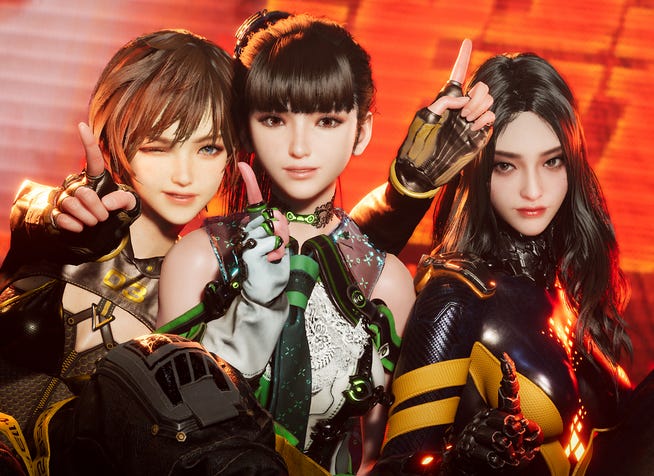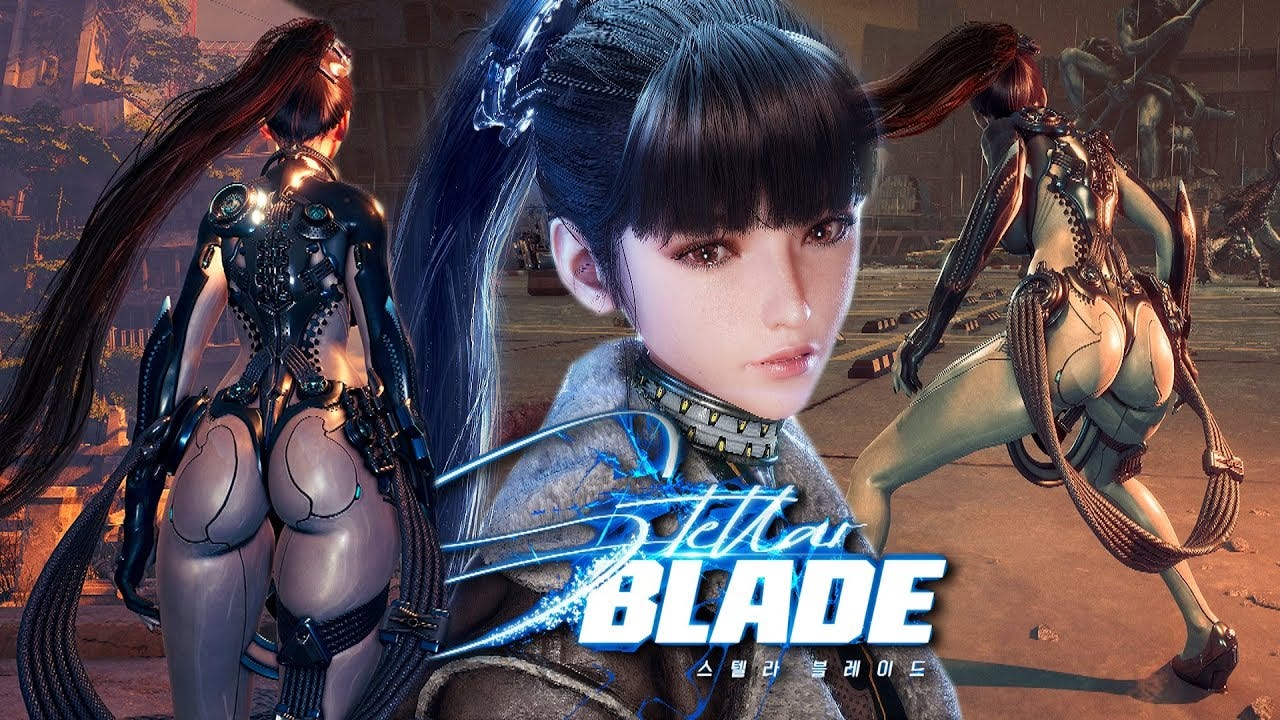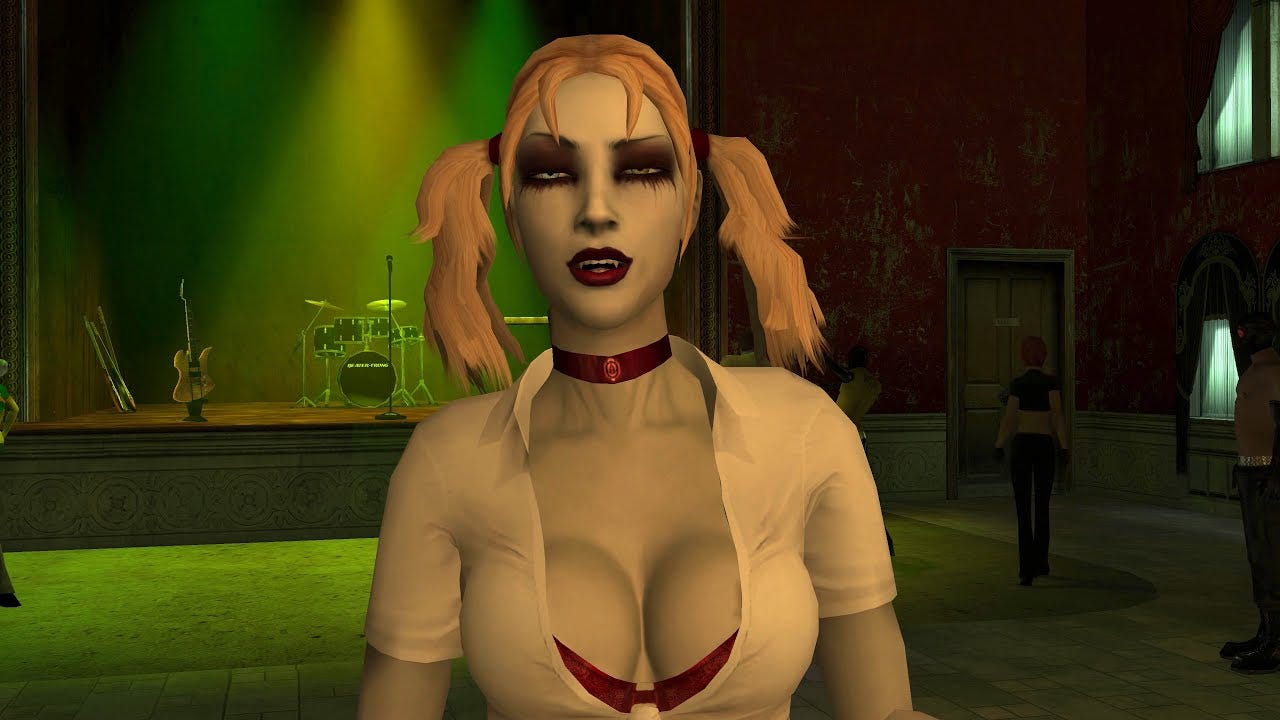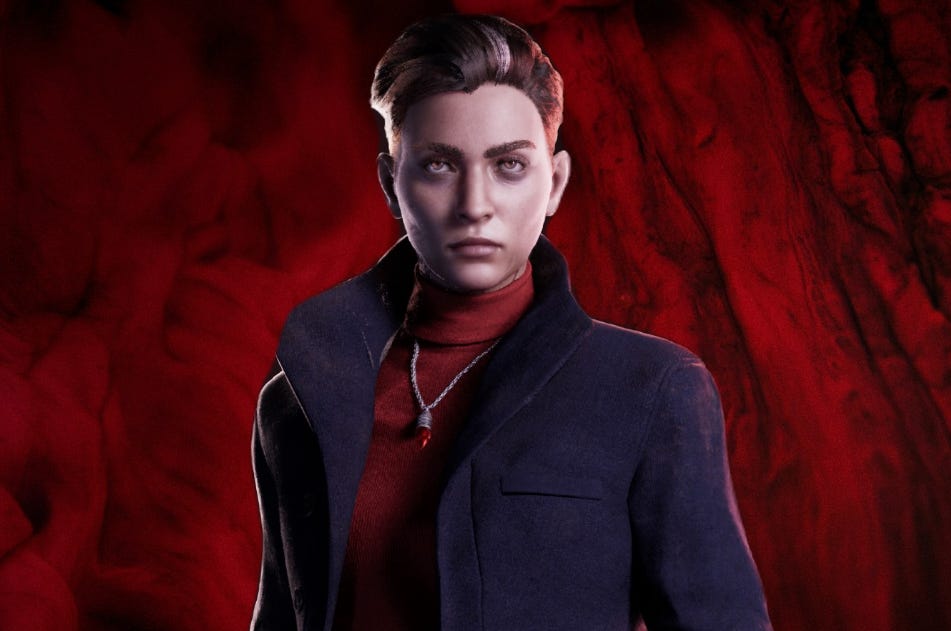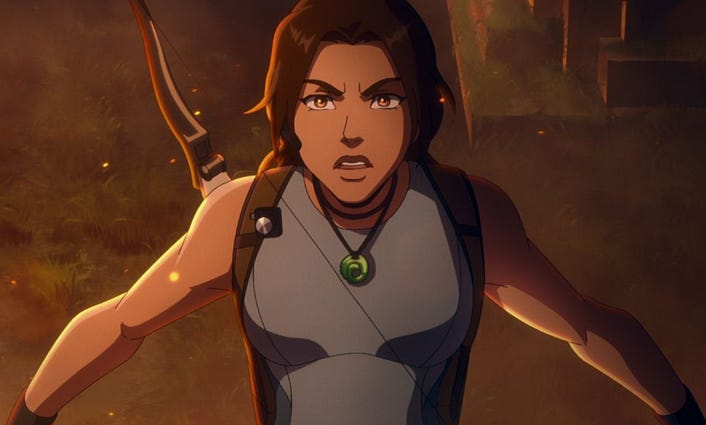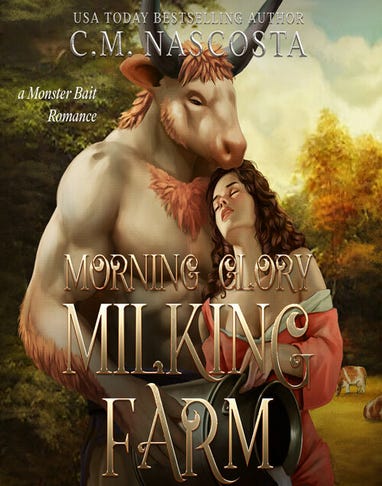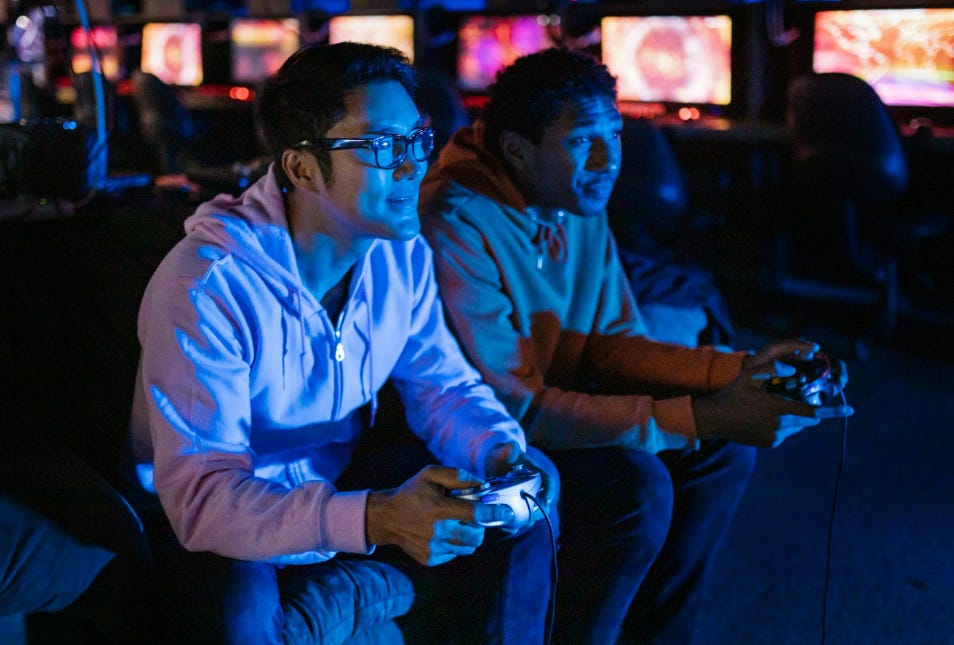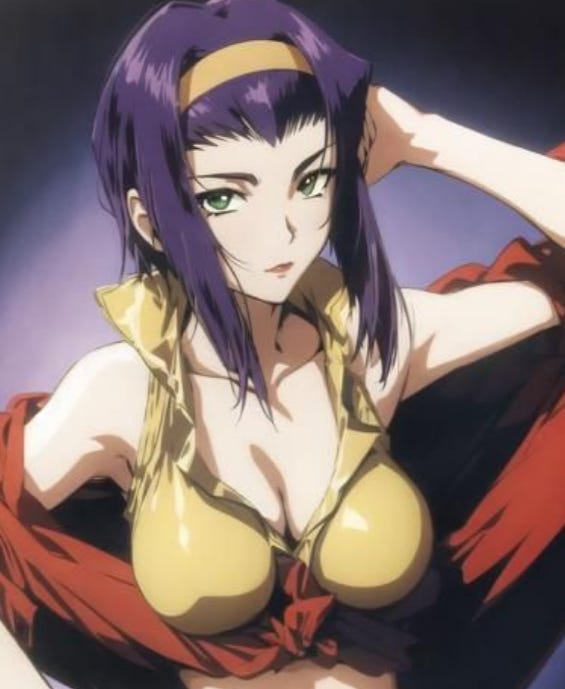Cultural Hypocrisy: Why "Gooners" Get Burned While Femcel Monster Milking Gets a Free Pass
THE WAR ON MALE SPACES
Let’s kick this off with a straight shot at the heart of the matter, because if there’s one thing grinding gears in the fantasy, cyberpunk, action, and sci-fi subcultures these days, it’s the blatant, eye-rolling hypocrisy surrounding what gets censored and what gets a free ride. Picture the scene: you’re diving into a high-stakes video game, the kind that’s been pulling in male audiences since the pixelated glory days of Doom and Street Fighter. Explosions rip across the screen, combos chain like poetry in motion, and yeah, there’s a female character who’s got that classic allure—curves, confidence, the works. It’s not the main event, just part of the vibe, a nod to the escapism that makes these worlds pop. But oh boy, does it trigger the outrage brigade.
Take Stellar Blade, that 2024 PS5 hack-and-slasher that hit like a thunderclap. The protagonist, Eve, is this lithe, athletic android built for battle, with a design that’s unapologetically attractive—think skin-tight suits and proportions that scream “heroine from a cyberpunk fever dream.”
Eve struts through neon-drenched ruins, slicing up alien horrors with a sword that’s basically an extension of her grace. But instead of folks geeking out over the gameplay mechanics or the Korean dev team’s fresh take on the genre, what do we get? A torrent of hit pieces from left-leaning journalists and activists on social media, labeling her “regressive,” “objectifying,” and a throwback to sexist tropes. One outlet called it a “blatant example of regressive, sexist design,” while another sparked endless threads debating if such “unrealistic” beauty distracts from the “real” story or harms women’s representation in gaming. The backlash was so intense it even led to petitions and developer statements defending their vision, but the damage was done—suddenly, Eve’s look became the battlefield, not the actual battles in the game.
And this isn’t some one-off fluke; it’s the rule in Western gaming now. Developers are walking on eggshells, desexualizing female characters left and right.
Another example is the eponymous Tomb Raider. Gone are the days of Lara Croft raiding tombs with a wink and a holster—now it’s all about “relatable” designs, baggy outfits, and faces that scream “practicality over appeal.” Why? Because in 2025, the year of our Lord, a hot heroine apparently poses a existential threat to society, reinforcing stereotypes or whatever buzzword is trending.
It’s like the entire industry caught a case of ephemeral rot, where anything that might titillate a male audience gets neutered under the guise of progress. Studios bend over backward to cater to this “modern audience,” a term that’s been slung around so much it’s lost all meaning—it’s just corporate filler for “don’t offend the vocal minority.”
THE LAUGHABLE HYPOCRISY
Now, flip the script to the other side of the aisle, where female-focused entertainment thrives in the romance and romantasy realms. These are the steamy novels dominating bestseller lists, TikTok recommendations, and book club hauls, pulling in readers who crave that escapist heat.
And boy, do they deliver without a shred of the same scrutiny. Enter Morning Glory Milking Farm by C.M. Nascosta, a standout in the monster romance subgenre that’s been racking up fans since its release.
The setup? A broke young woman named Violet lands a gig at a secretive “farm” that’s anything but agricultural. Her job: extracting “essence” from hulking minotaurs and other beastly hybrids—think massive, horned hunks with animalistic features, all primed for seduction and explicit encounters. It’s erotica dialed up to eleven, blending human-animal crossovers with power dynamics, consent play, and outright fantasy bestiality vibes. Violet’s arc involves romancing these creatures, milking them in scenes that leave little to the imagination, complete with detailed descriptions of fur, tails, and... well, you get the picture.
Reviews eat it up, praising the “unfiltered thoughts,” quirky world-building, and empowering twists on taboo desires. Some readers flag it as skirting zoophilia territory, even with the sentient monsters, but where’s the widespread uproar? No viral campaigns demanding bans, no journalists penning op-eds on how it warps perceptions of relationships or promotes degeneracy. Instead, it sells like gangbusters, spawns sequels, and floats serenely in the cultural stream, untouched by the pitchforks that descend on a game like Stellar Blade. TikTokers gush over fan art of minotaur makeouts, Goodreads threads celebrate the “spicy” escapism, and the whole thing gets a pass because it’s wrapped in “female empowerment” or “harmless fantasy.”
See the hypocrisy baking in here? In male-leaning spaces like action games or cyberpunk epics, even a whiff of attractiveness in female leads ignites a censorship crusade. Journalists fire off salvos, activists mobilize, and developers scramble to “fix” designs that were never broken. It’s a symptom of that larger cancer plaguing entertainment industries—a plague that’s been eating away at creative integrity for over a decade, spreading from Hollywood to indie gaming studios with alarming speed. But hop over to women’s entertainment, and the rules evaporate. Bestiality-lite? Power imbalances where humans dominate mythical beasts? Explicit content that makes old-school pulp novels blush? All good, as long as it’s under the banner of the “female gaze.” Don’t misunderstand—I’m all for creative freedom; live and let live is the name of the game. But this lopsided policing reeks of a deeper agenda, where traditional male interests get gutted while the wildest expressions fly free in female-centric spaces. It’s like the zeitgeist decreed that guys can’t enjoy eye candy without a side of guilt, but ladies get carte blanche for the most out-there rides.
This double standard isn’t just irksome; it’s hollowing out the soul of our favorite subcultures. Fantasy and sci-fi should be untamed playgrounds for the imagination, not ideological minefields rigged with purity tests. Remember the golden eras? Cyberpunk touchstones like Blade Runner didn’t flinch from allure—Rachel’s sultry replicant vibe added layers to the noir dread, without anyone crying foul. Action flicks like Die Hard gave us heroes who protected with grit and charm, no asterisks attached. Even in anime influences, take Faye Valentine from the original Cowboy Bebop: introduced in “Honky Tonk Women,” she’s a knockout using her looks to haggle with a clerk, only to reveal she’s packing an SMG for the thugs tailing her. When she botches the shootout, spraying bullets wildly and surrendering in a flash, it nails her character—sexy and cunning, but flawed in combat without her ship. It’s organic, fun, and integral to the story.
Contrast that with the live-action remake’s Faye: she bursts in episode one, holding Spike at gunpoint with snide quips that scream “girl boss” overload—frumpy attitude, dirty outfit, independence so forced it’s begging for applause.
She’s not the reserved, beautiful operator; she’s the cookie-cutter aggressive type whose whole schtick is belittling men, ironically making her dependent on that dynamic. It’s the same rot we see in remakes like The Little Mermaid, where unique personalities get stripped for flat CGI checklists, or Oldboy’s needless 2013 redo that adds nothing but worse acting. Why? Appeals to that phantom “modern audience,” churning out performative inclusivity over substance.
NOW WHAT?
This ties into a bigger plague: the unrelenting commoditization of sex and appeal in media. On one hand, male-focused content gets sanitized to avoid offense, desexualizing women to the point where games feel like sterile simulations. On the other, female-focused tales like Morning Glory revel in degeneracy—seducing minotaurs isn’t just allowed; it’s celebrated as bold. If minotaur milking gets a hall pass, why can’t Eve in Stellar Blade own her strut without the torches? It’s indicative of how entertainment’s been afflicted with this ephemeral decay, where corporate agendas prioritize short-term virtue signaling over long-term legacy.
Ultimately, this hypocrisy is just one symptom of an ever-persistent cancer in pop culture. Good things—like balanced, unfiltered creativity—don’t last forever if we let the rot spread. But maybe it’s time to push back, to celebrate subcultures that honor the full spectrum without asterisks. Fantasy with alluring heroines, cyberpunk with raw edges, action that doesn’t pull punches—why settle for less? If it ain’t broke, why “fix” it with double standards? Let’s peel back these layers and demand better, because in the end, the audience deserves entertainment that’s fun, fair, and free from the hypocritical haze.
SARJ OUT



